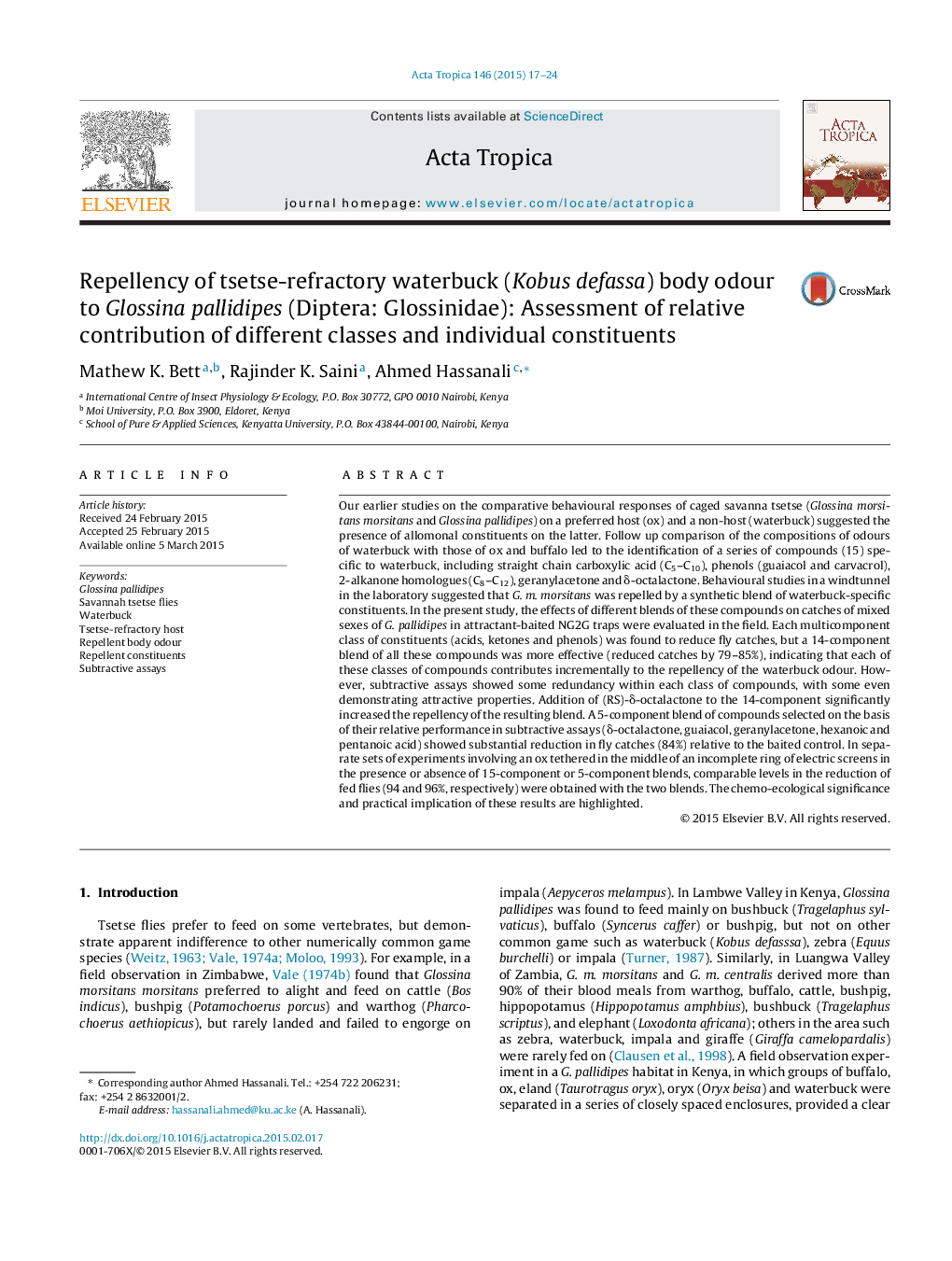| Article ID | Journal | Published Year | Pages | File Type |
|---|---|---|---|---|
| 6127028 | Acta Tropica | 2015 | 8 Pages |
Abstract
Our earlier studies on the comparative behavioural responses of caged savanna tsetse (Glossina morsitans morsitans and Glossina pallidipes) on a preferred host (ox) and a non-host (waterbuck) suggested the presence of allomonal constituents on the latter. Follow up comparison of the compositions of odours of waterbuck with those of ox and buffalo led to the identification of a series of compounds (15) specific to waterbuck, including straight chain carboxylic acid (C5-C10), phenols (guaiacol and carvacrol), 2-alkanone homologues (C8-C12), geranylacetone and δ-octalactone. Behavioural studies in a windtunnel in the laboratory suggested that G. m. morsitans was repelled by a synthetic blend of waterbuck-specific constituents. In the present study, the effects of different blends of these compounds on catches of mixed sexes of G. pallidipes in attractant-baited NG2G traps were evaluated in the field. Each multicomponent class of constituents (acids, ketones and phenols) was found to reduce fly catches, but a 14-component blend of all these compounds was more effective (reduced catches by 79-85%), indicating that each of these classes of compounds contributes incrementally to the repellency of the waterbuck odour. However, subtractive assays showed some redundancy within each class of compounds, with some even demonstrating attractive properties. Addition of (RS)-δ-octalactone to the 14-component significantly increased the repellency of the resulting blend. A 5-component blend of compounds selected on the basis of their relative performance in subtractive assays (δ-octalactone, guaiacol, geranylacetone, hexanoic and pentanoic acid) showed substantial reduction in fly catches (84%) relative to the baited control. In separate sets of experiments involving an ox tethered in the middle of an incomplete ring of electric screens in the presence or absence of 15-component or 5-component blends, comparable levels in the reduction of fed flies (94 and 96%, respectively) were obtained with the two blends. The chemo-ecological significance and practical implication of these results are highlighted.
Keywords
Related Topics
Life Sciences
Immunology and Microbiology
Parasitology
Authors
Mathew K. Bett, Rajinder K. Saini, Ahmed Hassanali,
